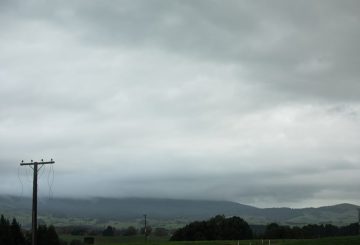Ang isang programa sa kaligtasan ng aso sa Dunedin ay nagtuturo sa mga mag-aaral kung paano ligtas na makipag-ugnayan sa mga aso. Sinimulan ng Dunedin City Council ang programang ito noong 2007, at lumago ito sa taong ito upang maabot ang mas maraming mga mag-aaral. Ang isang aso na nagngangalang Daniel the Spaniel, kasama ang mga opisyal ng kontrol ng hayop ng konseho, ay nagtuturo sa mga mag-aaral.
Ang bilang ng mga sesyon ay tumaas mula siyam noong nakaraang taon hanggang sa isang potensyal na 69 aralin sa 18 paaralan ngayong taon. Marami pang mga opisyal ng kontrol ng hayop ang sinanay upang turuan ang mga mag-aaral. Si Janine Day, isang opisyal ng kontrol sa hayop ng konseho, ay umaasa na sa pagtatapos ng sesyon, malalaman ng mga bata kung paano ligtas na lumapit sa isang hindi pamilyar na aso.
Kahit na sinasabi ng may-ari ng aso na okay lang na patupin ang kanilang aso, kailangang tingnan ng mga bata ang aso upang makita kung komportable ito. Kung ipinapakita ng aso ang ngipin nito, hindi dapat lumapit ito ng mga bata, kahit na sinabi ng may-ari na okay lang ito.
Si Daniel the Spaniel, na nagsusuot ng isang mataas na nakikita na vest at fluorescent leash, ay nagbibigay ng isang praktikal na diskarte sa kaligtasan ng aso. Tinuturo ang mga mag-aaral na bigyan ang mga aso ng puwang at huwag magmadali sa kanila.
Nagrekord ng Dunedin City Council ang 74 pag-atake ng aso noong nakaraang taon, ang pinakamataas na bilang sa huling limang taon. Sa taong ito, 18 pag-atake ang naitala hanggang ngayon. Gayunpaman, hindi ipinapakita ng data kung gaano karaming mga bata ang inaatake.
Si Nicky Wallace, isa pang opisyal ng kontrol sa hayop ng konseho, ay nagsabi na madalas na makaligtaan ng mga bata ang mga palatandaan na maaaring kumagat ng isang aso. Ipinaliwanag niya na ang mga aso ay nagbibigay ng mga pahiwatig tulad ng daluban ng kanilang mga labi, pagtakip ng buntot sa pagitan ng kanilang mga binti, at pagpapakita ng puti ng kanilang mga mata. Nais niyang matutunan ang mga bata na tumayo pa, tulad ng isang puno, kapag lumapit ang isang aso, sa halip na tumakas o sumigaw. Sa ganitong paraan, malamang na mawawalan ng interes ang aso at lumayo.
Dalawang mag-aaral, sina Evie at Quinn, parehong 10, ang natutunan tungkol sa mga pahiwatig na ito at kung paano ligtas na lumapit sa isang aso. Ang layunin ng mga session sa kaligtasan ng aso na ito ay upang panatilihing ligtas ang mga bata at masaya ang mga aso.




























































